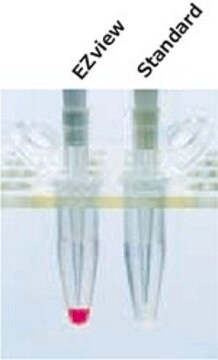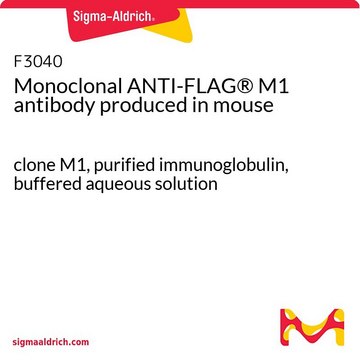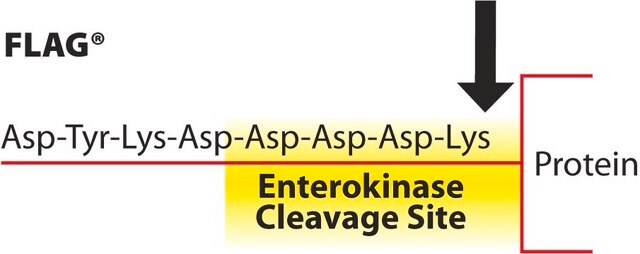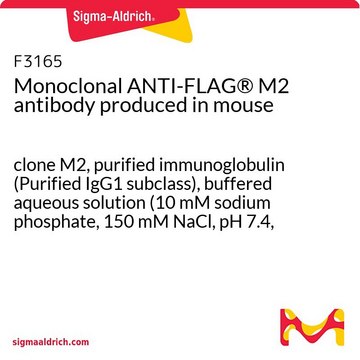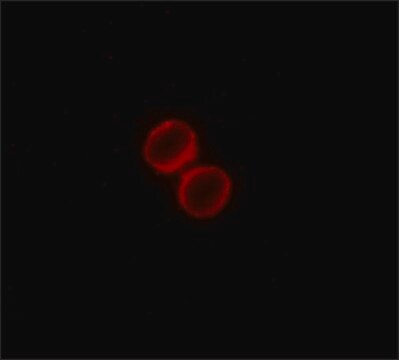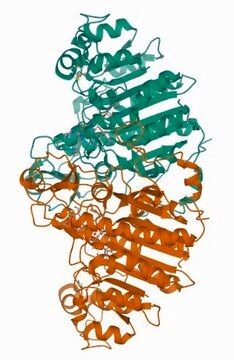A4596
ANTI-FLAG® M1 Agarose Affinity Gel
Sinonimo/i:
Anti-ddddk, Anti-dykddddk
About This Item
Prodotti consigliati
Coniugato
agarose conjugate
Livello qualitativo
Tipo di anticorpo
primary antibodies
Stato
suspension
Isotipo
IgG12b
Capacità
≥0.6 mg/mL, gel binding capacity
Temperatura di conservazione
−20°C
Descrizione generale
Specificità
N-Asp-Tyr-Lys-Asp-Asp-Asp-Asp-Lys-C
Applicazioni
Affinity gel is for calcium mediated purification of N-terminal FLAG fusion proteins.
immunoprecipitation (IP): suitable
Elution - FLAG peptide, Glycine, pH 3.5 EDTA
Learn more product details in our FLAG® application portal.
Caratteristiche e vantaggi
- Typically purify fusion proteins from crude lysates to single band purity in just one chromatography step.
- Fusion protein may be eluted from affinity resin by mild elution with EDTA.
- A solution of FLAG peptide can be used for gentle, non-denaturing elution of FLAG fusion proteins.
Stato fisico
Altre note
Note legali
Non trovi il prodotto giusto?
Prova il nostro Motore di ricerca dei prodotti.
Prodotti correlati
Codice della classe di stoccaggio
10 - Combustible liquids
Classe di pericolosità dell'acqua (WGK)
WGK 3
Punto d’infiammabilità (°F)
Not applicable
Punto d’infiammabilità (°C)
Not applicable
Scegli una delle versioni più recenti:
Possiedi già questo prodotto?
I documenti relativi ai prodotti acquistati recentemente sono disponibili nell’Archivio dei documenti.
I clienti hanno visto anche
Contenuto correlato
Protein purification techniques, reagents, and protocols for purifying recombinant proteins using methods including, ion-exchange, size-exclusion, and protein affinity chromatography.
Protein expression technologies for expressing recombinant proteins in E. coli, insect, yeast, and mammalian expression systems for fundamental research and the support of therapeutics and vaccine production.
Il team dei nostri ricercatori vanta grande esperienza in tutte le aree della ricerca quali Life Science, scienza dei materiali, sintesi chimica, cromatografia, discipline analitiche, ecc..
Contatta l'Assistenza Tecnica.

